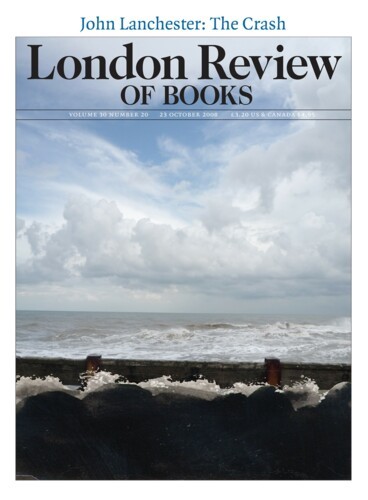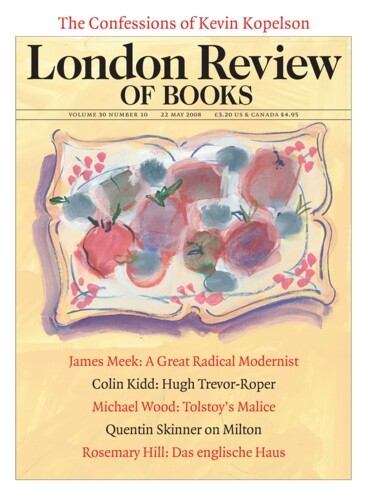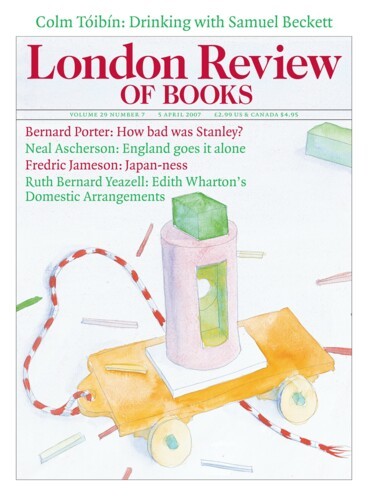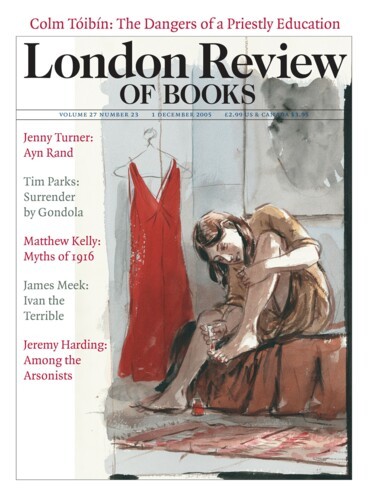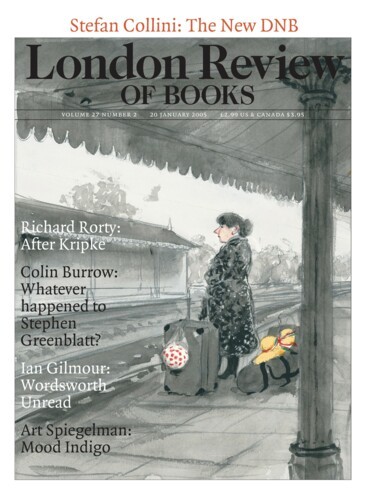Sit like an Apple: Artists’ Wives
Ruth Bernard Yeazell, 23 October 2008
Claude Monet’s first breakthrough was not the ‘impression’ of a sunrise that lent its name to a movement but a full-length figure in contemporary dress that he submitted to the Salon of 1866 under the title Camille. Posed against a red curtain on a canvas more than seven feet high, a woman in a green and black striped gown and a black jacket trimmed with fur stands with her...
